1. Transistor Radios
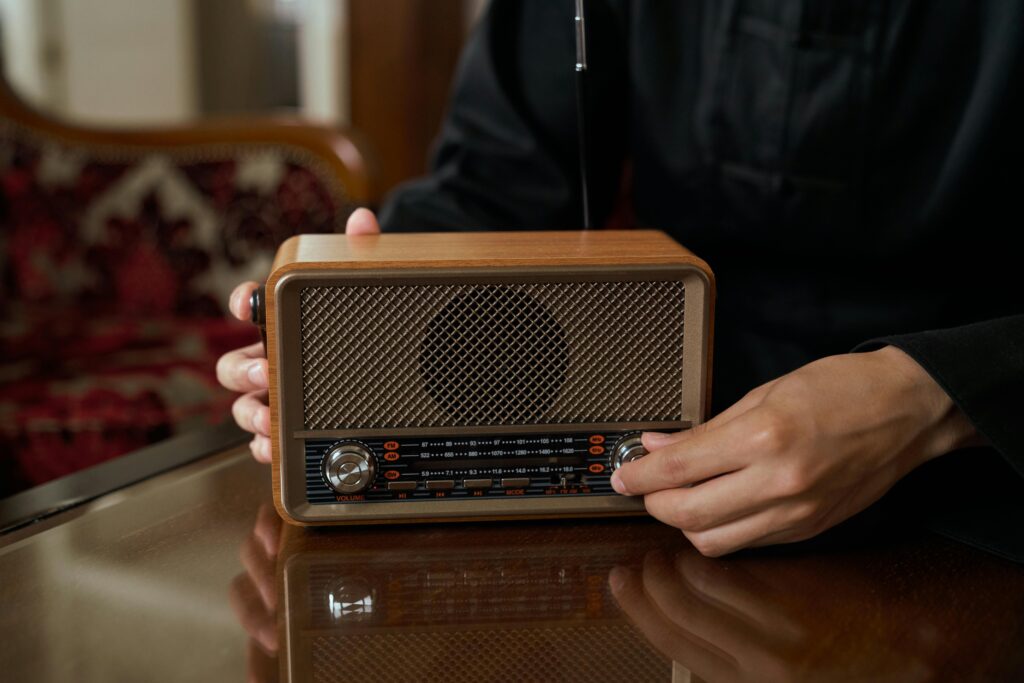
Portable, affordable, and everywhere, transistor radios let teens sneak The Beatles under their pillows or listen to baseball games in the yard. These battery-powered devices, which became widely accessible in the 1950s but reached their peak ubiquity in the ’60s, relied on new solid-state transistors to amplify signals, replacing bulky vacuum tubes. This technological shift meant radios could finally fit in a pocket, costing as little as $20 for a basic model. Companies like Sony, which launched in the U.S. in 1955 with its pocket-sized TR-55, capitalized on this trend, turning the radio from a living room fixture into a personal accessory. Their popularity was enormous; by the mid-’60s, tens of millions had been sold worldwide, fundamentally changing how young people consumed media and music. They were revolutionary for their size and mobility but faded as boomboxes, the Sony Walkman cassette player, and eventually smartphones arrived.
2. 8-Track Tapes
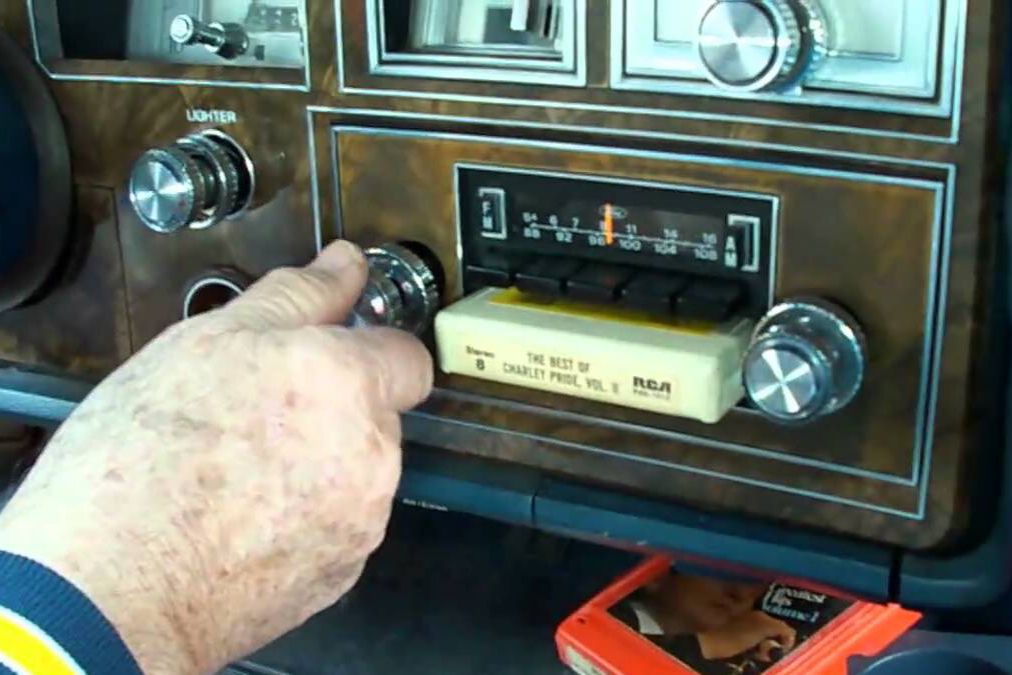
For a brief, technologically awkward window, nothing felt cooler than sliding an 8-track cartridge into a car stereo. The format, officially called the Stereo-8, was developed in 1964 by a consortium including Bill Lear (Lear Jet Corporation) and was heavily backed by Ford Motor Company and RCA Records. Ford began offering 8-track players in its 1966 model year cars, cementing the format’s place as the primary way to listen to music on the go. The tapes used a continuous loop of magnetic tape with eight separate tracks (four stereo pairs), meaning the tape never stopped and required an audible “clunk” as it switched programs. Though the clunky cartridges were prone to skipping and jamming, and listeners often had to wait for the track to loop around to the beginning, it was, in the late ’60s, the future of in-car entertainment. The more compact cassette tape, which offered better sound quality and fast-forward/rewind capabilities, began to eclipse the 8-track by the mid-1970s.
3. Kodak Instamatic Cameras with Flashcubes
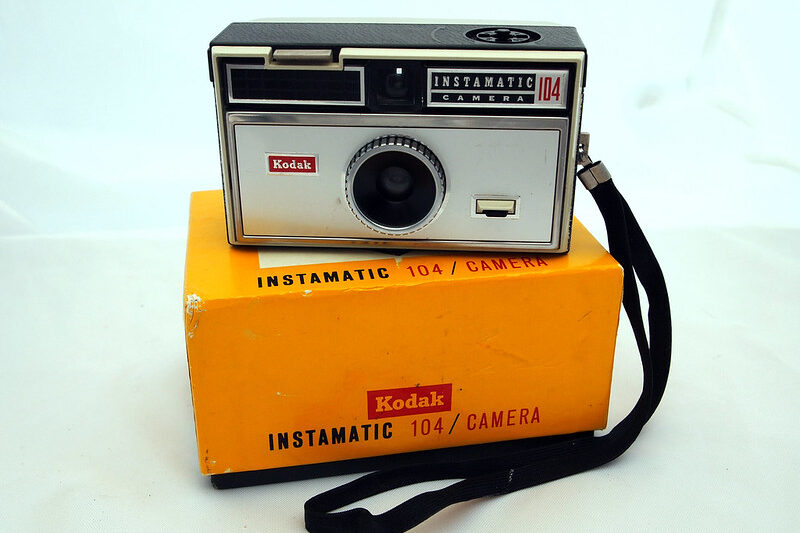
These pocket-sized Kodak Instamatic cameras brought simple photography to the masses after their introduction in 1963. Their genius lay in the new 126 film cartridge, which was incredibly easy to drop into the camera, no more fumbling with spools of film in the light. The Instamatic line sold over \mathbf{50} million units in eight years, making it the most popular camera of its time and ensuring virtually every ’60s family had one for capturing vacations and birthdays. To solve the problem of indoor lighting, they utilized the iconic \mathbf{Flashcube}: a small, rotating cube containing four single-use flash bulbs, allowing the user to take four flash photos before needing a new cube. By the digital era, with its reusable flashes and instant results, the Instamatic and its consumable flashcubes were obsolete, but the simple, square photographs they produced defined family albums for a generation.
4. Jiffy Pop Popcorn
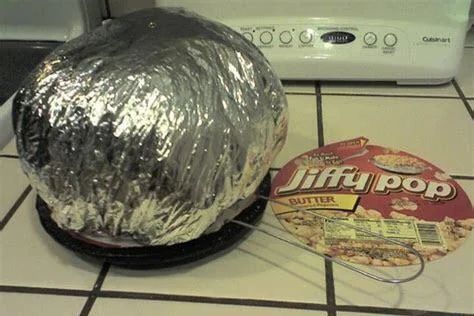
Introduced in 1959, Jiffy Pop took off in the ’60s and quickly became a family ritual. Watching the foil dome puff up on the stovetop was almost as exciting as eating the buttery, salty popcorn inside. The product was a marvel of convenience for its time, providing an all-in-one container that could be placed directly on a stove burner, it contained the popcorn kernels, popping oil, and salt within its distinctive aluminum pan and expanding foil lid. Unlike a standard pot, the clever design forced steam pressure to inflate the lid into a large, shimmering dome, signaling the popcorn was ready. Jiffy Pop remained a staple well into the 1970s, but the invention and widespread adoption of the microwave oven, with its ultra-fast, even more convenient bags of popcorn, eventually stole the show, relegating the stovetop Jiffy Pop to a novelty item or a camping snack.
5. Vinyl Record Changers
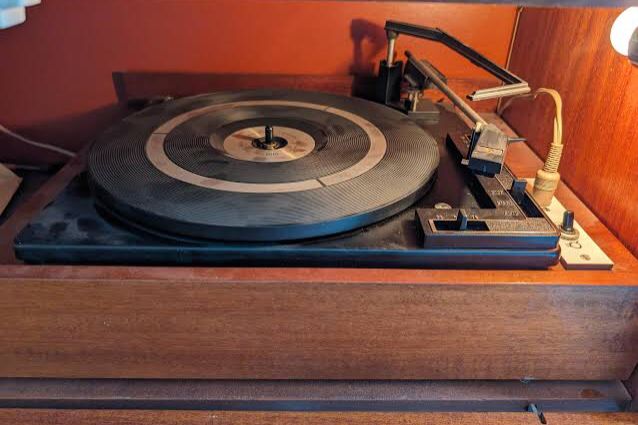
Vinyl record changers, also known as automatic turntables, were a ’60s party staple, designed to provide hours of uninterrupted background music. These systems allowed listeners to stack up to ten or more LPs (long-playing records) onto a tall center spindle. Once the first record finished, a mechanism would swing the tone arm out of the way, drop the next record from the stack onto the turntable platter, and then lower the tone arm onto the beginning groove of the new disc. This innovation was a significant convenience for hosting social gatherings, allowing the music to play for extended periods without manual intervention. However, the system’s design often resulted in a heavy tracking force on the records and the physical jarring of the drop mechanism, which could lead to scratching and wear on the vinyl. The rise of multi-cassette decks, compact disc players, and eventually digital playlists made the physical record-stacking ritual obsolete, but they absolutely defined social gatherings for a decade.
6. Full-Service Gas Station Attendants
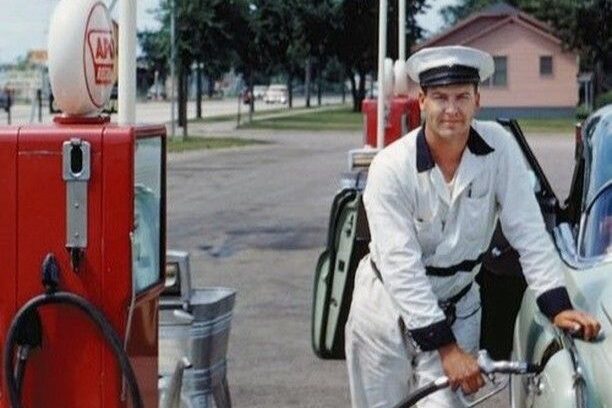
A defining characteristic of a ’60s road trip was the full-service gas station attendant, a time when you never pumped your own gas. When a driver pulled up to the pump, an attendant would come out, ask what you needed, pump the fuel, and handle the payment. But their service didn’t stop there: they would often clean the windshield, check the oil level with the dipstick, look at the tire pressure, and offer a free road map, all included in the price of the fuel. This ritual of comprehensive service was standard across the country. The change began in the 1970s, driven by rising fuel prices and the need for stations to cut labor costs. The rise of self-service fueling stations offered a lower price per gallon, which proved too compelling for most consumers, quickly wiping out the full-service ritual across the U.S. and leaving only a few states, like New Jersey and Oregon, that still require it.
7. Mail-Order Catalogs
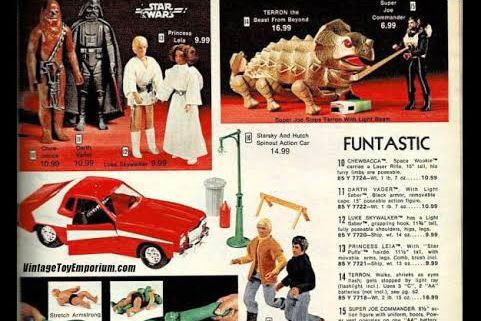
For the ’60s family, the thick, voluminous Sears and Montgomery Ward mail-order catalogs were shopping bibles and crucial tools for life. These seasonal publications often spanned hundreds of pages and contained everything imaginable: clothing, tools, furniture, appliances, toys, and even, for a time, pre-fabricated houses. Families would circle items, use them to compile Christmas gift lists, and rely on them in rural areas that lacked nearby department stores. The catalogs were so integral to American life that they were often called the “wish book” during the holidays. Orders were placed via mail with a check or through a local order office. The convenience and lower prices offered by the rise of suburban shopping malls in the 1970s, followed by the complete transformation brought by online shopping and e-commerce, eventually rendered the massive, general-merchandise catalog an unprofitable business model, shrinking it into nothing but a piece of heavy paper nostalgia.
8. Tupperware Parties
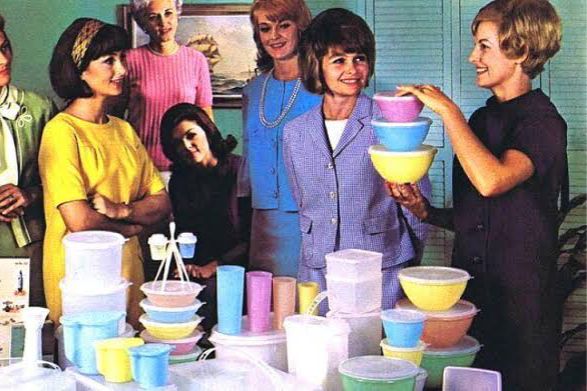
In the 1960s, buying plastic food storage was a social and economic event, thanks to the widespread popularity of Tupperware Parties. These gatherings, typically hosted by a woman in her living room, featured a demonstrator who showcased the products, most famously demonstrating the airtight, watertight “burping seal” of the containers. The Tupperware company, having embraced the direct-sales party model under Vice President Brownie Wise in the 1950s, used the parties not just to sell its polyethylene products but also to empower women with independent income opportunities and social community. The parties offered hostesses free product and a commission from the sales. While direct-sales models for other goods have continued, the unique cultural moment of the dedicated ’60s Tupperware Party, which was as much about community-building as product sales, has been superseded by a vast market of competitors and a shift toward online shopping.
9. Metal Lunchboxes with Glass Thermoses
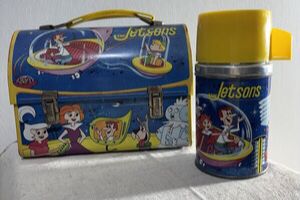
Every schoolkid in the ’60s carried a metal lunchbox, and it was much more than a container for food, it was a personal billboard of pop culture, emblazoned with licensed images of The Jetsons, The Monkees, The Man from U.N.C.L.E., or Barbie. These tin boxes had a simple, sturdy metal body, a hinged lid, and, most distinctively, a small internal clip designed to hold the accompanying \mathbf{glass} thermos. The thermoses, used to keep milk hot soup, were insulated by a fragile glass lining, making them notoriously prone to shattering, resulting in many a lunchtime disappointment and a quick switch to a plastic replacement. The metal lunchbox was a childhood badge of honor, but concerns over safety, combined with the development of injection-molded plastic that was cheaper and more durable, led to the widespread replacement of metal boxes with plastic ones by the late 1970s, making the tin-and-glass combo a collectible relic.
10. Slide Projectors and Carousels
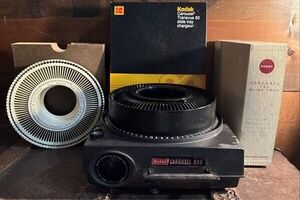
For the ’60s family, reliving the great moments of a vacation or a birthday meant gathering in a darkened living room for a slide show. Family memories, captured on 35mm color-positive film (slide film), were meticulously mounted in individual cardboard or plastic frames. These were then loaded into a slide carousel, most famously produced by Kodak’s Carousel line, which could hold up to 140 slides. With the satisfying, mechanical “clack” of the projector, each image was magnified and displayed onto a screen or a white wall. Neighbors and relatives often endured long, narrated slide shows, a major form of home entertainment before the widespread adoption of home video cameras. Today’s photos and videos live instantly in our pockets, on our phones, and on cloud storage, but the ritual of setting up the bulky equipment and the unmistakable click of the carousel advancing remains a distinct memory for a generation.
11. Rabbit Ear TV Antennas
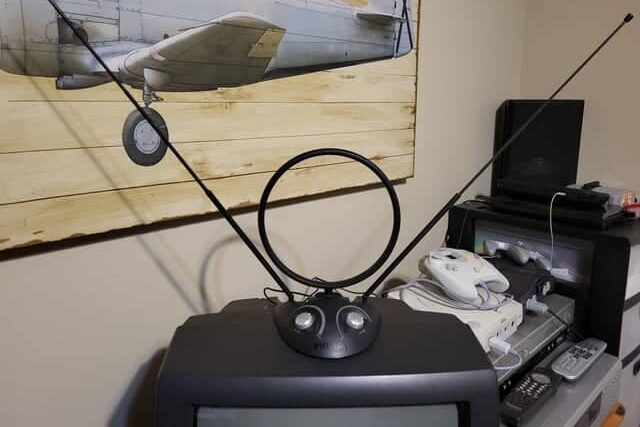
Before the age of cable and streaming, watching television was often a hands-on, frustrating ritual involving rabbit ear TV antennas. These V-shaped, telescopic metal rods sat atop the TV set, and adjusting them was a daily chore necessary to pull in over-the-air broadcast signals. Getting a clear black-and-white or, later, early color picture often involved a household member contorting themselves, foil-wrapping the antenna tips, or carefully balancing the unit to find the perfect orientation for the best reception. Signal strength was highly dependent on a home’s location and terrain, and changing the channel often meant having to re-tune the rabbit ears. The antennas were an inexpensive, standard piece of equipment. The rapid expansion of cable television networks, which delivered a consistent, high-quality signal directly to the home via a coaxial cable, began in the 1970s, making the endless fiddling with rabbit ears completely unnecessary and removing a common point of domestic friction.
12. Lava Lamps
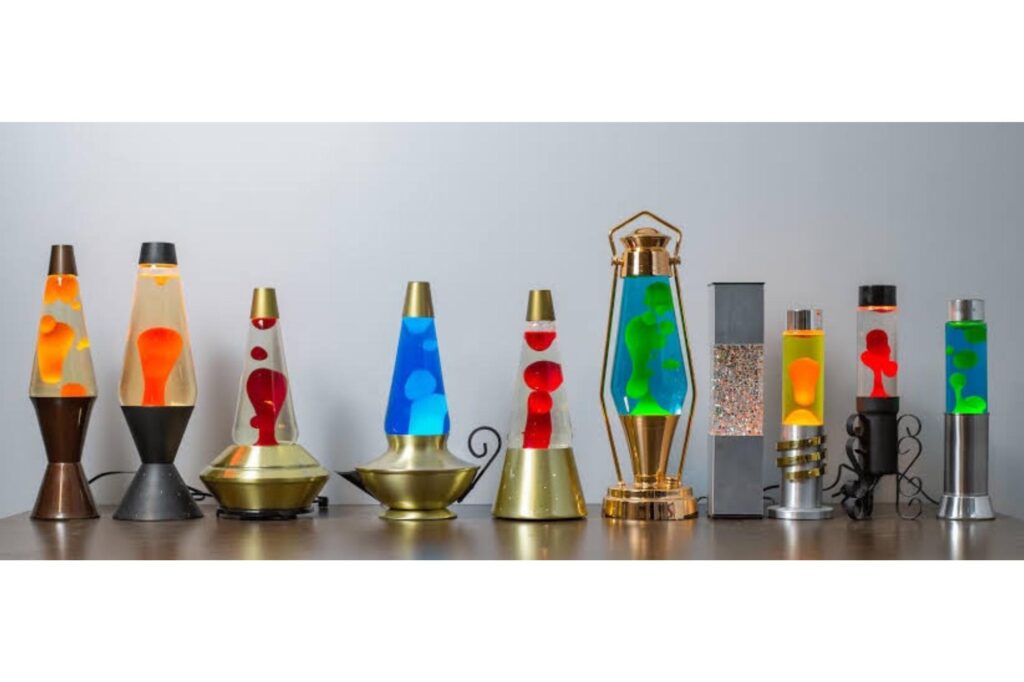
The lava lamp, first sold commercially in 1963 as the “Astro” by British inventor Edward Craven Walker, became an instant, iconic symbol of psychedelic décor and the counterculture in the late 1960s. The lamps featured a distinctive glass bottle containing a clear liquid and a colored wax mixture. A light bulb in the base heated the wax, causing it to change density and rise and fall in mesmerizing, slow-moving blobs that seemed to defy gravity. Their flowing, amorphous movement was perfect for the era’s fascination with unconventional, mind-bending art and design. Though they still exist today and are occasionally mass-produced as retro novelties, their original cultural moment as a cutting-edge piece of pop art and an essential furnishing for any hip college dorm room or bachelor pad belongs firmly to the ’60s. The original company, Lava Lite, has experienced several changes in ownership, but no subsequent decade has matched the lamp’s cultural significance as a signifier of a specific, experimental time.
13. Cigarette Ads on Television
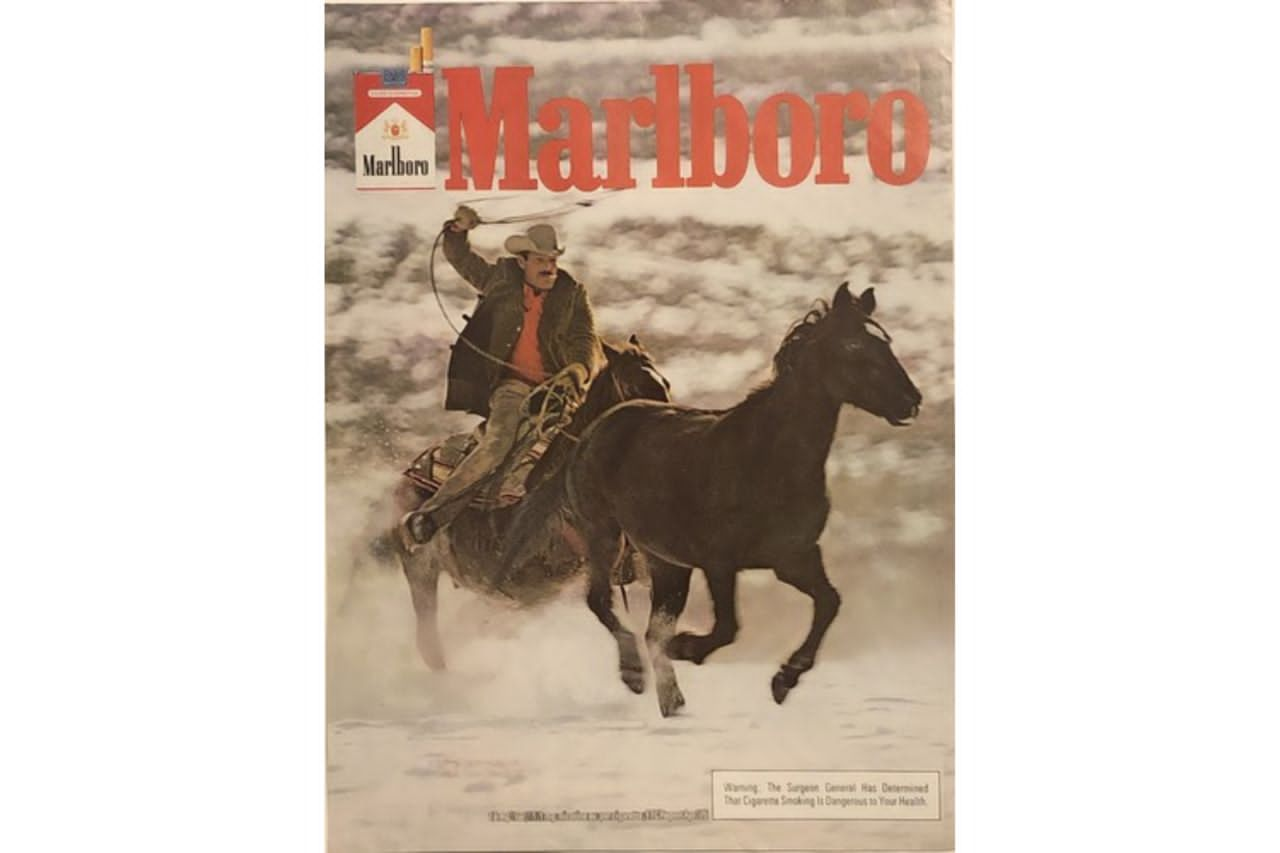
In the 1960s, cigarettes weren’t just common, they were actively glamorized on prime-time television, a stark contrast to today’s public health environment. Commercial breaks were filled with sophisticated jingles and imagery: the rugged Marlboro Man on horseback, women enjoying a break with a “smooth” Virginia Slims, and celebrities endorsing brands like Pall Mall. Tobacco companies were among the biggest advertisers on TV, spending hundreds of millions of dollars to link smoking with relaxation, sex appeal, and success. The cultural perception of smoking as a harmless, everyday habit was pervasive. However, public health campaigns and growing evidence of the dangers of tobacco led to a landmark moment: the Public Health Cigarette Smoking Act of 1970, which banned all cigarette advertising on U.S. television and radio, effective January 2, 1971. This act instantly erased one of the decade’s biggest advertising categories from the airwaves, a ban that remains in place today.
14. Hair Dryers with Bonnet Hoods
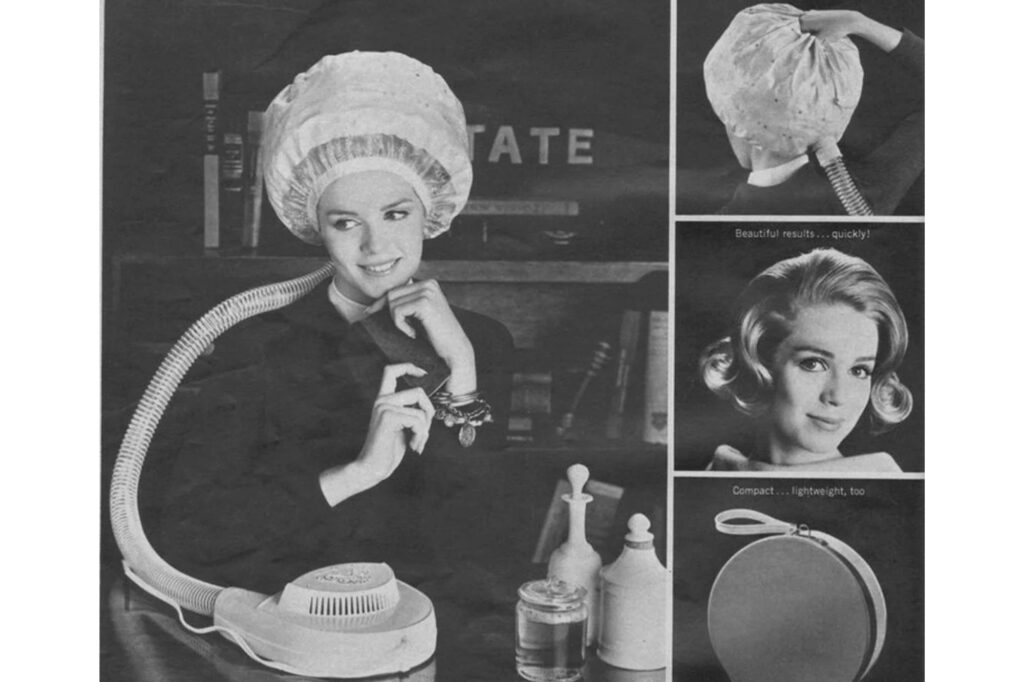
In the ’60s, achieving the era’s voluminous, sculpted hairstyles required serious heat, which led to the popularity of the bonnet hood hair dryer. These appliances brought the professional salon experience home. The bulky system consisted of a portable motor unit (sometimes attached to a briefcase-like case) connected to a flexible hose that led up to a large, soft plastic bonnet that covered the head. Women would sit under the gentle but continuous heat flow, allowing their hair, often set in rollers, to dry and “set” for the desired lift and curl. Companies like General Electric (GE) and Sunbeam sold millions of these devices. They were a Sunday night staple, but they were eventually made obsolete by the development of the more convenient, powerful, and maneuverable handheld pistol-grip blow dryer in the 1970s. The sleek, quick handheld dryers allowed for faster styling and less sitting time, permanently replacing the buzzing, cumbersome bonnet dryers.
15. Gas Station Road Maps
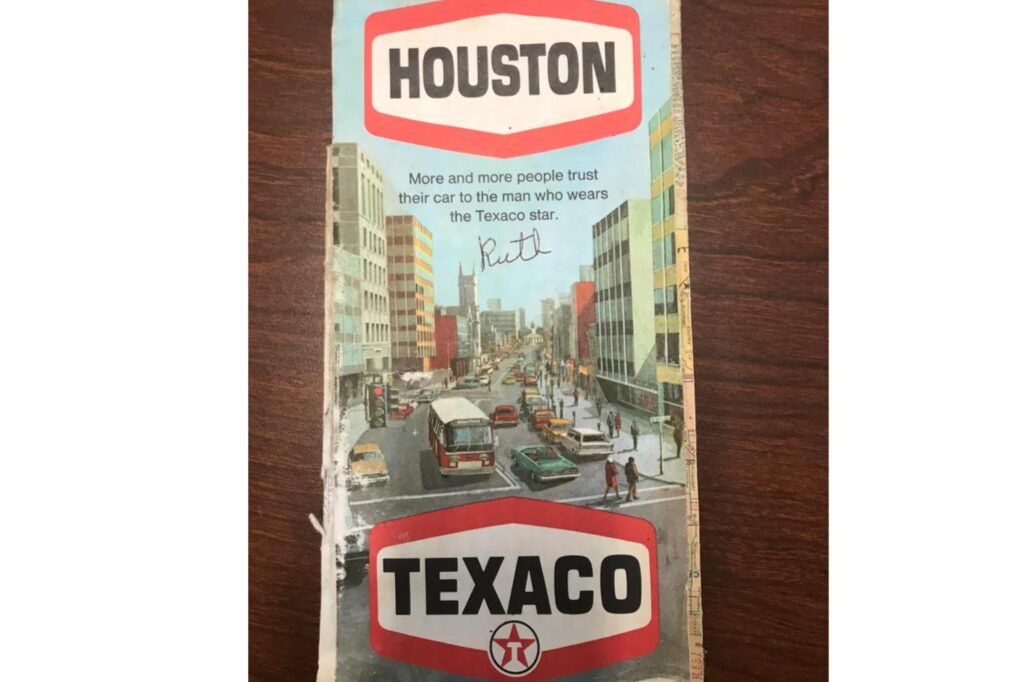
Every time a driver pulled into a full-service station for a fill-up, they could usually expect a free folding road map, often branded with the oil company’s logo (like Texaco or Shell). These detailed, paper maps were the primary navigation tool for the ’60s family, who would collect piles of them in the glove compartment for cross-country vacations. Road trips meant stopping for maps as much as for gas, meticulously unfolding them on the hood or passenger seat to trace out routes, estimate mileage, and identify local landmarks. They were essential for planning and a physical record of travel. The entire practice became unnecessary with the advent of in-car Global Positioning System (GPS) units in the 1990s and, definitively, with the rise of smartphone GPS apps like Google Maps in the 2000s. These digital tools provided turn-by-turn directions and real-time data, completely eliminating the need for a physical map and erasing the skill of paper map-reading from the driving experience.
16. Pedal Cars for Kids
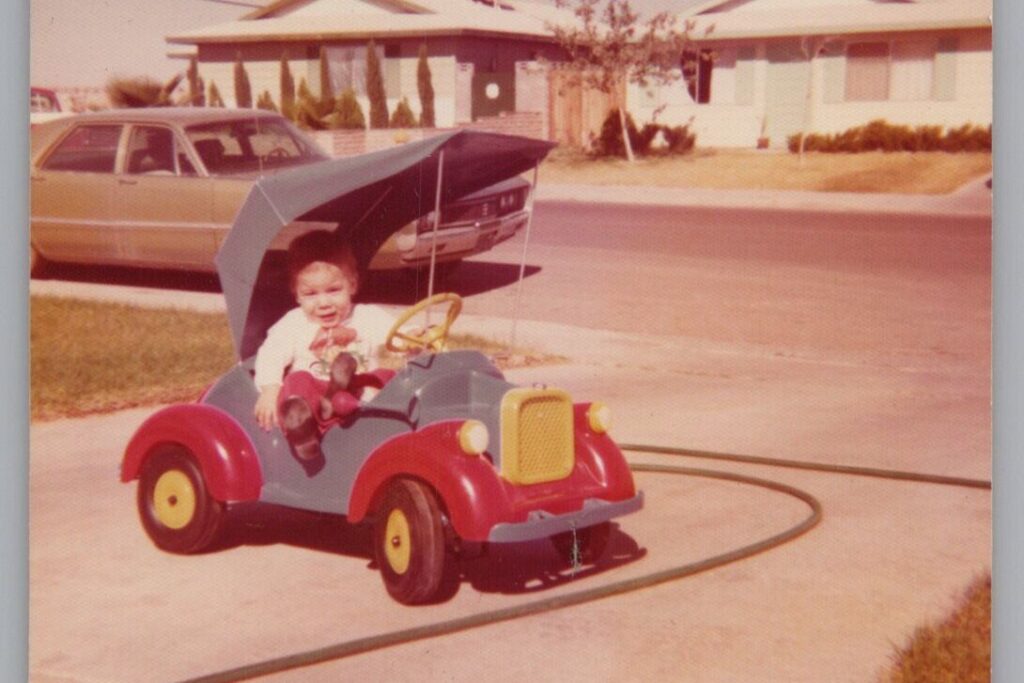
Children in the 1960s enjoyed a specific form of low-tech, high-status transportation: the pedal car. These metal ride-on toys were often heavy, well-built miniatures of popular full-sized automobiles like Cadillacs, Thunderbirds, or fire engines, and they were powered entirely by the child’s own pedaling motion. Pedal cars were significantly more durable and often much larger than the plastic ride-on toys that followed them. They represented a substantial financial investment for parents and were considered the ultimate childhood toy, often passed down through siblings. However, safety concerns, due to their weight and sharp metal edges, and the high cost of manufacturing steel toys led to their gradual replacement. By the late 1970s and 1980s, cheap, brightly colored, and safer injection-molded plastic toys became the norm, pushing the classic, heavy, and realistic metal pedal car into the realm of expensive, collectible antiques.
17. Soda Fountains in Pharmacies
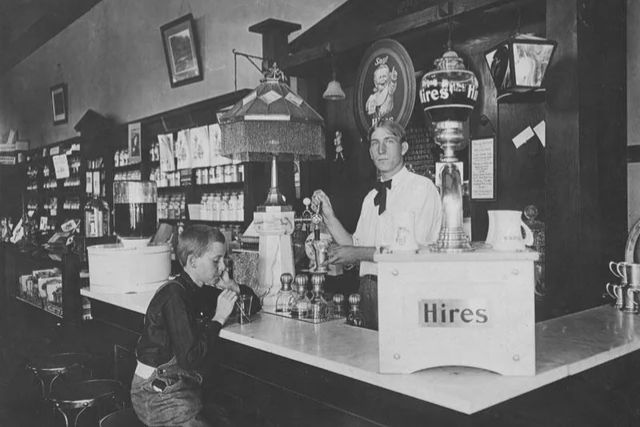
In the 1960s, the local pharmacy or drugstore was often more than just a place to pick up medicine; it doubled as a vital community hangout thanks to its in-house soda fountain. These counters were staffed by a “soda jerk” who mixed up popular treats like cherry cokes, root beer floats, limeades, milkshakes, and sundaes, often using a distinct metal cup and long spoon. Teens gathered there after school for a quick snack, and it was a common stop for families after church or a movie. It was an essential social fixture that blurred the lines between retail, food service, and community gathering. This American tradition began to decline sharply as independent pharmacies were bought out by large national chains, which streamlined operations and viewed the soda fountain as unprofitable and space-consuming. The rise of chain restaurants, specialized fast-food venues, and dedicated ice cream shops further eroded its purpose, leaving behind only the nostalgic imagery of the ’60s soda fountain.
18. Encyclopedias on the Shelf

In the 1960s, a matched set of encyclopedias, such as World Book or Encyclopædia Britannica, was considered the essential mark of a serious, learning-focused household and a crucial resource for student homework. Families often saved up for a set, which could cost hundreds of dollars, and they were commonly sold door-to-door by traveling salesmen on installment plans. These 20- to 30-volume sets contained printed, alphabetized summaries of human knowledge, and students would physically pull them from the shelf to research school reports. The biggest problem, of course, was that the content was out-of-date the moment it was printed, requiring annual, expensive yearbooks to stay current. The internet made this entire business model obsolete overnight. Beginning in the late 1990s, free, instantly searchable, and constantly updated digital information, culminating in sites like Wikipedia, rendered the costly, space-consuming, and static multi-volume encyclopedia set completely unnecessary for learning.
19. Record Player Consoles
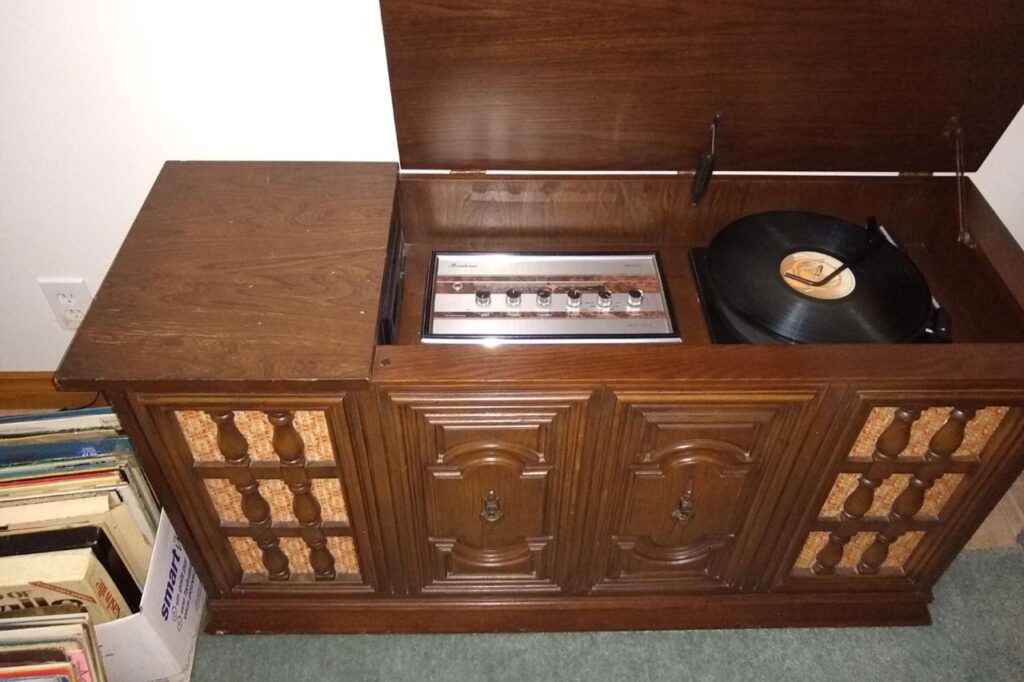
The record player console was the centerpiece of the 1960s living room, a massive piece of dedicated wood furniture that housed the family’s entire entertainment system. These elegant, imposing consoles combined a record player (often a changer), an AM/FM radio tuner, and powerful speakers all in one large cabinet that took up significant floor space. They were designed to blend in with the home décor, often featuring sliding doors or hinged lids. The console was a substantial investment, part technology and part display cabinet, signaling a family’s commitment to quality sound and a well-furnished home. They were the primary way families listened to music. The introduction of smaller, separate, and more customizable component stereo systems (like receivers, separate turntables, and bookshelf speakers) in the 1970s and 1980s made the all-in-one console design seem old-fashioned and less flexible. This shift to \mathbf{modular} hi-fi components spelled the end for the enormous living room console.
20. Portable Sewing Machines
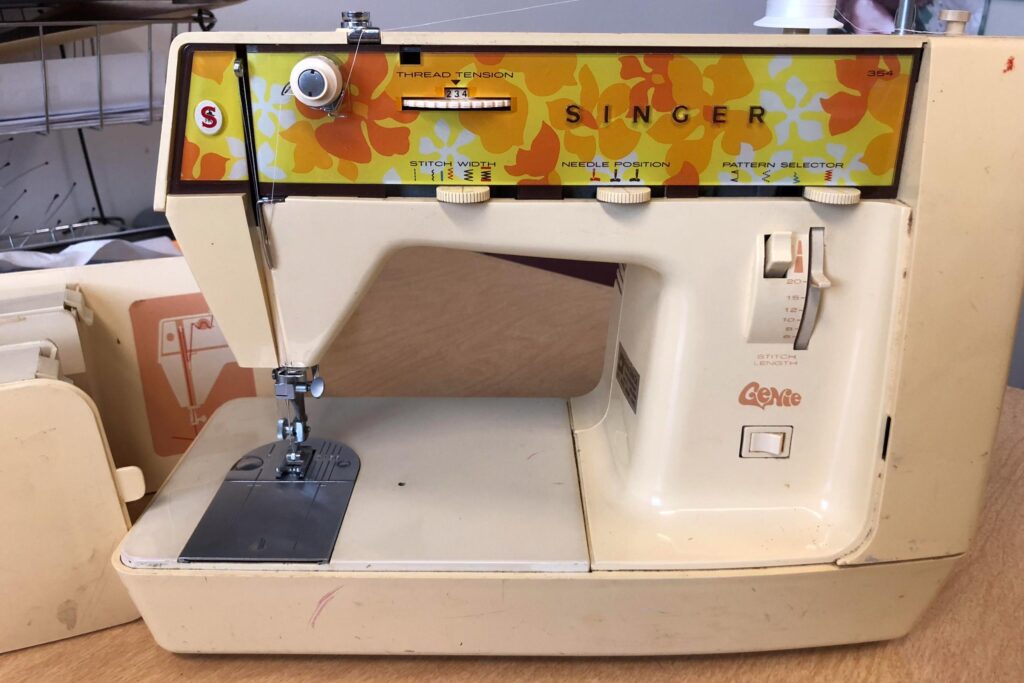
In the 1960s, a sewing machine was not just a hobby tool, it was a necessity for many households, which were still decades away from the rise of fast fashion. Making and mending clothes, hemming, and altering garments were everyday skills, and portable electric models, most famously from Singer, made the work easier. These machines, while heavy by today’s standards, were designed to be set up on a dining table or work surface and then stored away in a cabinet or case. They gave families the ability to save money, keep up with rapidly changing fashions, and create their own textiles and home décor. The rise of global manufacturing and the accompanying dramatic drop in the price of ready-made clothing, a trend that accelerated in the ’70s and beyond, slowly chipped away at the necessity of home sewing. While sewing still exists as a hobby, the ’60s ritual of the portable sewing machine being a necessary household appliance for everyday apparel is almost completely gone.
21. Punch Cards for Computers
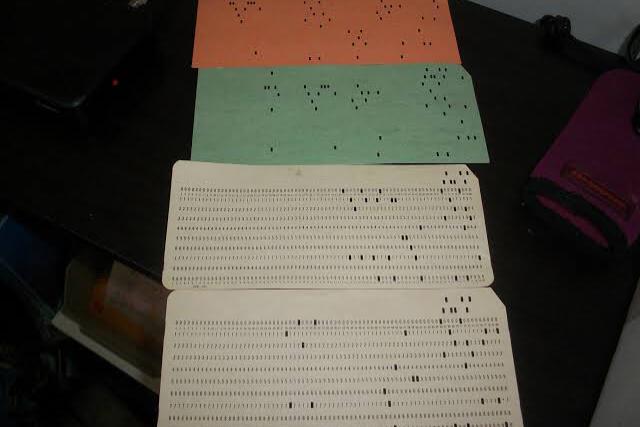
In the 1960s world of computing, the primary way to store and input data or programs was through punch cards (or Hollerith cards). These stiff paper cards had a precise column format, where the presence or absence of a small rectangular hole represented data, a line of code, a piece of information, or a command. Students and office workers who interacted with mainframes would carry stacks of these cards to the computer room, where they would be fed into a card reader. Accidentally dropping or mixing up a stack meant hours of work could be ruined, a common anxiety for a ’60s programmer. The cards were a bottleneck for input and processing and created massive storage problems. By the 1970s, magnetic storage technologies like magnetic tape and, later, floppy disks and hard drives, offered vastly superior speed, storage density, and reusability, quickly replacing the cumbersome, fragile, and single-use punch card as the standard data-entry medium.
22. Payphones Everywhere
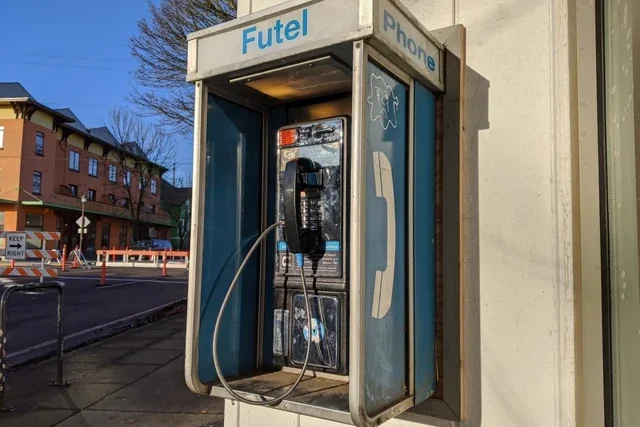
Long before the era of the personal cell phone, the payphone was an essential piece of urban and suburban infrastructure. In the 1960s, these coin-operated booths or wall-mounted units were everywhere: in diners, on street corners, in airports, and in schools. For a dime (the price was raised to 10 cents from a nickel in the 1950s), you could call home, contact a business, or drop in quarters for long-distance calls. They were the universal means of communication outside the home or office. The sheer convenience of personal, pocket-sized communication, which began with \mathbf{pagers} and culminated with the explosion of the cell phone in the late 1990s and 2000s, made payphones completely redundant. Today, the few remaining payphones are often non-functional, a curiosity, or relegated only to extremely isolated or high-traffic areas, having vanished almost completely from daily life.
23. Aluminum Christmas Trees

The aluminum Christmas tree was a distinct, glamorous, and utterly mid-century holiday fad that reached its peak popularity in the early to mid-1960s. These trees, composed of hundreds of individual aluminum foil “needles” or branches, were manufactured primarily in Manitowoc, Wisconsin, and looked futuristic and sleek, fitting perfectly with the decade’s fascination with space and modern design. Because string lights could be a fire hazard when touching the metal, the tree was typically illuminated by a nearby, motorized rotating color wheel that cast a shifting spectrum of red, green, blue, and yellow light onto the metallic branches. Despite their modernity, the ’60s trees quickly fell out of favor by the 1970s, largely deemed tacky or an inauthentic replacement for a real evergreen. Today they are highly sought-after, expensive \mathbf{retro} collectibles, but their cultural moment as cutting-edge holiday décor belongs exclusively to the era of The Jetsons.
24. Test Patterns on TV

For kids of the ’60s, the TV test pattern was a fixture of early mornings or late nights, signaling that the broadcasting day was over or hadn’t begun. Before stations were able to afford or fill a full 24-hour broadcast schedule, they would go off-air overnight. When the station resumed broadcasting, or during periods of technical adjustment, a standardized test pattern would be displayed: a high-resolution, black-and-white grid or circular target, often accompanied by a steady, continuous tone or static music. This pattern (like the famous \mathbf{Indian} Head test pattern) was used by TV repairmen and technicians to correctly tune and align the set’s picture, color, and aspect ratio. Kids of the ’60s remember staring at these patterns impatiently, waiting for the broadcast day to begin so they could finally watch cartoons, the Today Show, or the morning news. The advent of 24-hour network broadcasting, cable, and then digital TV eventually killed the need for this calibration ritual, making the TV test pattern a ghostly memory.
The 1960s were filled with products and rituals that shaped everyday life, from the simple thrill of a Transistor Radio to the serious heft of a family Encyclopedia set. While technology and shifting economies have swept these 24 items into history, they collectively defined how families lived, shopped, entertained themselves, and stayed connected in a world on the brink of profound change. The objects may no longer exist, but the memories they created certainly do.
This story 24 Once-Essential Products from the ’60s That No Longer Exist Anywhere was first published on Daily FETCH


